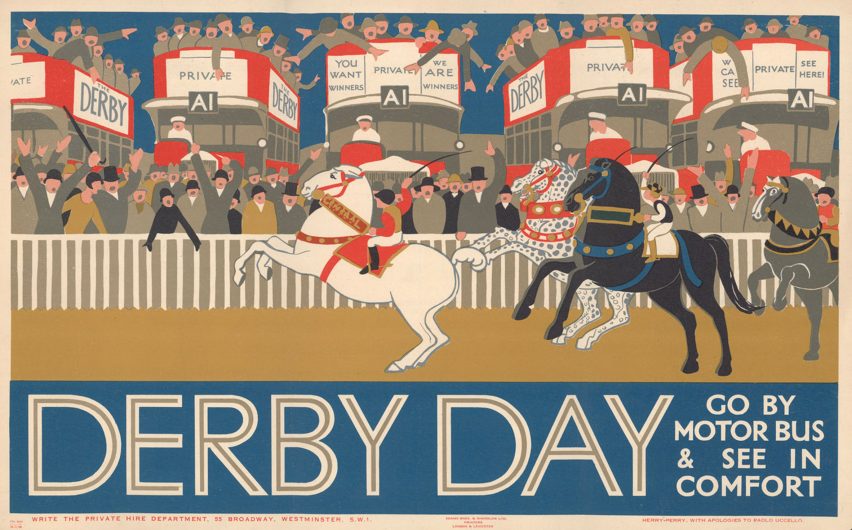To celebrate 100 years since women won the right to vote in the UK, the London Transport Museum has opened a major exhibition showcasing posters created by female graphic designers, illustrators and artists.
The Poster Girls exhibition traces transport adverts created by women over the past century. Over 150 posters and original artworks are on display, ranging from those by well-known designers such as Mabel Lucie Attwell, to lesser-known artists.
"The aim of the exhibition is to shine the torch on the contribution of women to Transport for London," explained curator David Bownes.
"There is undoubtedly an interest in female design history that hasn't been there for some years," he told Dezeen. "Some of these women's stories have been neglected in the history of design, but were actually quite well regarded in their time."
"The exhibition has a hopeful, inspirational undertone that recognises that women have achieved great design in the past and that we're not just starting from ground zero today."
The exhibition is arranged into six sections. The first showcases the earliest pieces – created between 1910 and 1920 – and includes the first female-designed poster to appear on London's transport networks.
The second section is named The Golden Age, and celebrates a rise in the amount of women commissioned by Transport for London (TfL) in the 1920s and 30s.
This period saw a rejection of this cartoon style of the previous decade, and instead featured prominent use of flat colour, graphic abstraction and bold geometric shapes.
In the third section, visitors pass through an area filled with pieces from the 40s and 50s, which are mostly public information posters relating to the second world war.
The Artists and Agencies section, relating to the 60s and 70s, showcases the rise of works created by big advertising agencies, and how these took more of an illustrative approach.
Transport for London introduced a fine-art commissioning programme in the late 80s, to fill free advertising space, and the results this are shown in an area titled Reviving the Tradition. It also includes the commercial posters of the 90s, which featured a "go places – do things" approach.
The final area begins in the early 2000s and continues up until present day.
"We wanted to get a good representation of all of the periods, from 1910 to the present day," said Brown. "We wanted to make sure that every decade is represented."
"Ideally, there would be a clear arrow of upward progress from 1910 to 2017. But what you have is a very steep rise in the 20s and 30s and then a significant decline in the number of women designing posters in the 40s and early 50s," he added.
Poster Girls is on show at the London Transport Museum until January 2019.

